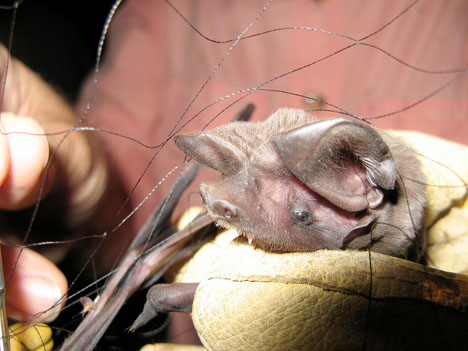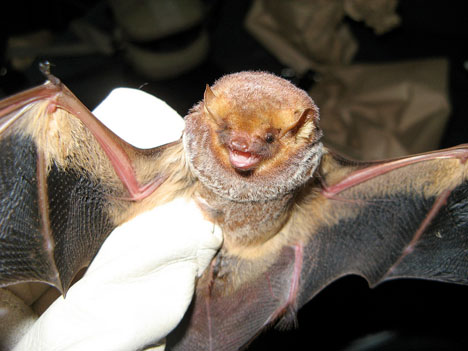
13 different species of bats exist in Florida
As night falls over north Florida, a band of 66 men and women split into small groups to find bats in damp, mosquito-rich places in the Panhandle, like Apalachicola National Forest, Joe Budd Wildlife Management Area and St. Marks National Wildlife Refuge.
To ensnare the bats, biologists hoist nearly invisible “mist nets” as tall as trees. They wait for hours in the dark. They have equipment out on portable tables, so they can quickly log in any bats they capture. The bats will be identified, measured and weighed, and a sample of guano will be collected before they are let go.
“It’s best to think like a bat” when scouting for bats, explained Melissa Tucker, wildlife biologist for the Florida Fish and Wildlife Conservation Commission (FWC). “Bats are not evenly distributed across the landscape. Some areas are more important for foraging and roosting, and we’re still figuring those things out,” she said. Sites over water or with features such as fire lines or forest trails that funnel flying bats into the nets are usually good choices.
The grand total of bats captured over three nights: 246.

Eight of Florida’s 13 native bat species were identified in this survey: the Southeastern myotis, Seminole bat, red bat, Brazilian free-tailed bat, evening bat, big brown bat, Rafinesque’s big-eared bat and tricolored bat. Natives like the threatened Florida bonneted bat live only in the southern end of the state.
“It was a lot of bats. We were really pleased about the number and the diversity. Finding eight species was exciting to us,” Tucker said. “It was an amount of information about bat species in north Florida that our staff couldn’t have gathered on our own or in such a short amount of time.”
The “Bat Blitz” was conducted for three nights in late May as biologists from the FWC and the University of Florida joined forces with Apalachicola National Forest staff, as well as students and volunteers from throughout the southeast United States and as far away as Oklahoma, Kentucky and Ohio. The blitz, sponsored by the Florida Bat Working Group in conjunction with the Southeastern Bat Diversity Network, was held for the first time in Florida.
How are bats doing in Florida?
“In general, we have a sense in Florida that our common species of bats are probably doing OK,” said Tucker, acknowledging, “We do not have a lot of baseline information to draw from.”
The deadly white-nose syndrome that has decimated many cave-roosting bat species throughout the eastern United States has not been detected in Florida. The disease is caused by a fungus found in cold caves and affects bats as they hibernate. With Florida’s relatively warm winters, few bats hibernate here, so there is hope bats in the state won’t experience its devastating effects.
Still, to prevent a potential spread of the fungus, “Bat Blitz” biologists were extremely careful about decontaminating equipment between every bat examination and at the end of every night, as well as forbidding anyone from bringing in equipment from out of state.
Florida bats play a major role in insect control, consuming moths that destroy crops and dining upon mosquitoes. Some bats also pollinate flowers, although all bats in Florida are insectivores.
How to help bats?
“Use insecticide sparingly and with caution. It’s always nice to put out bat houses,” Tucker said. “And if you come across bats in tree cavities, palm fronds or Spanish moss, step back and give them their space.”
